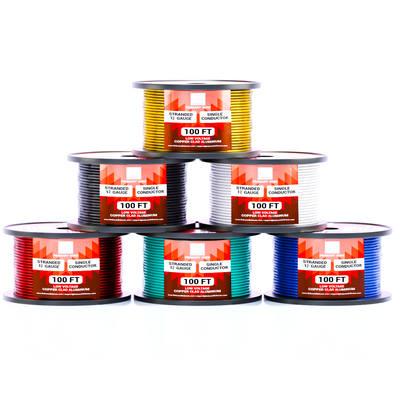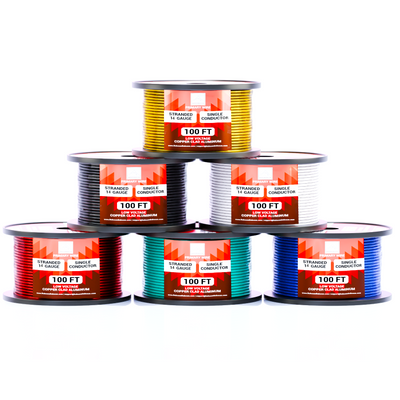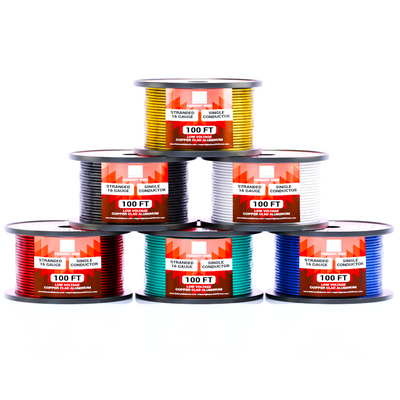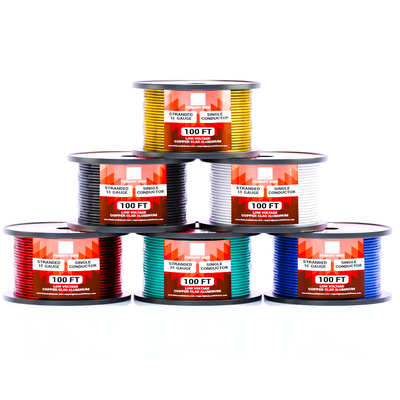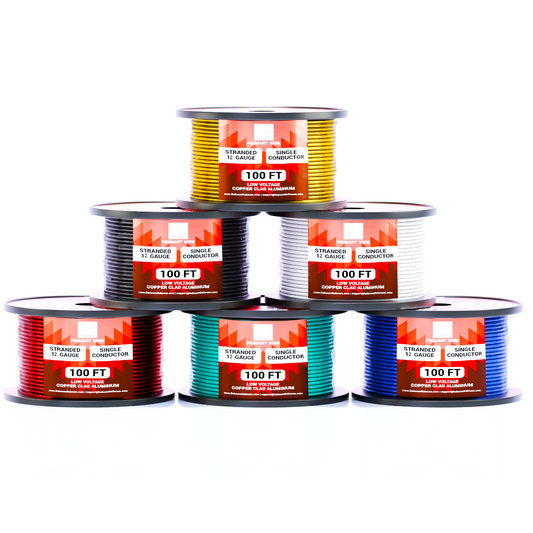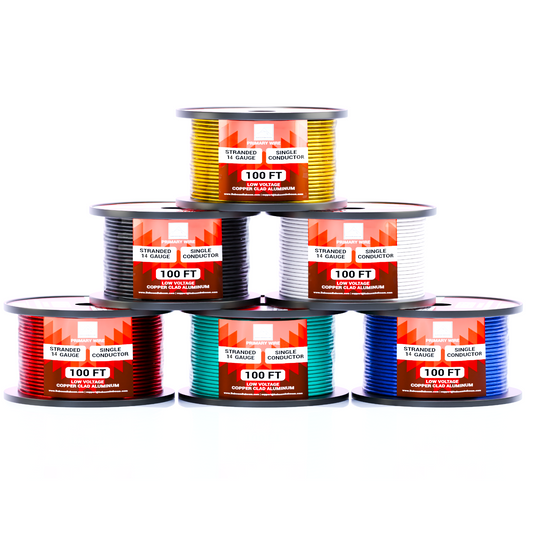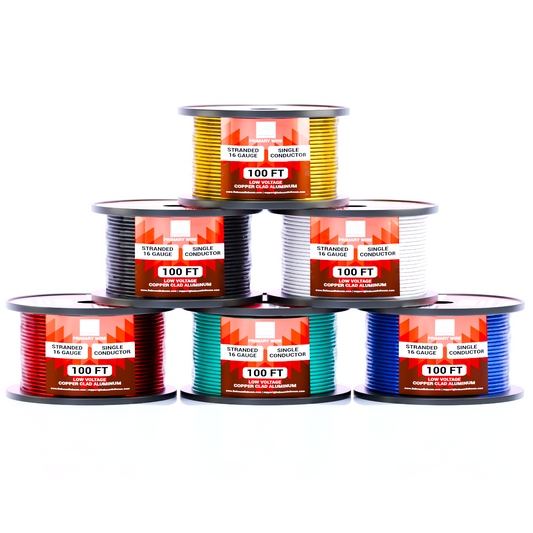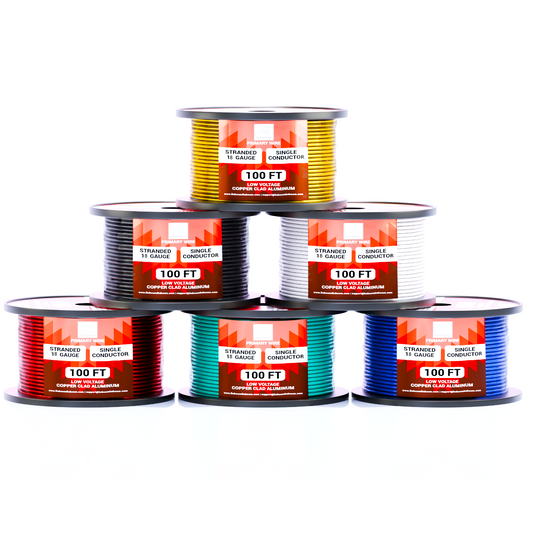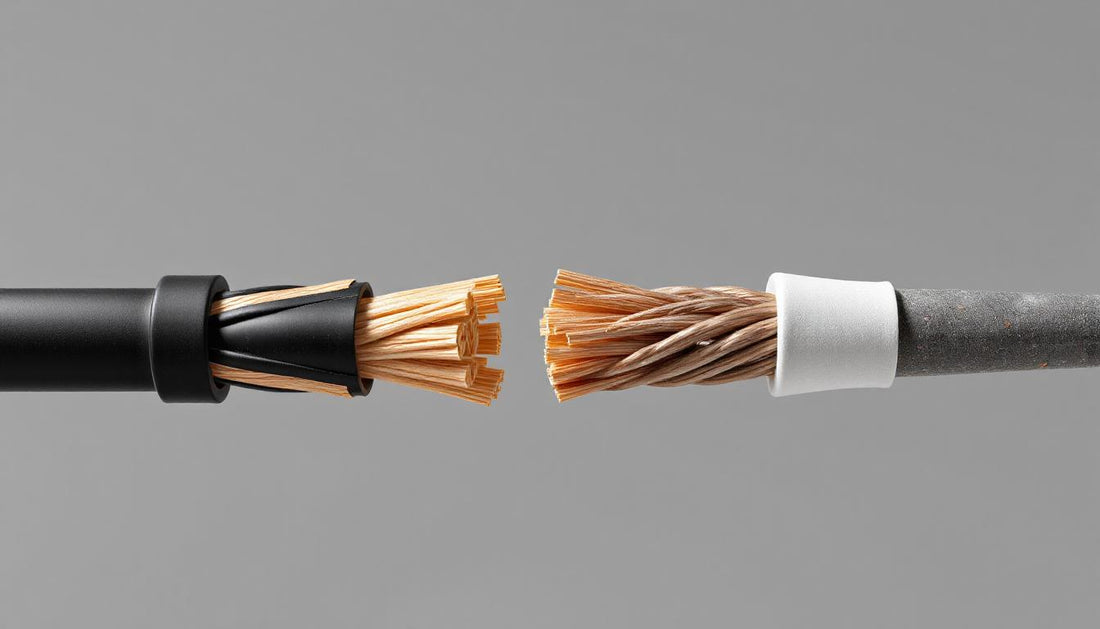
The Truth About Wire Stranding: Fine vs Coarse
Share
Introduction
When it comes to choosing the right wire for car or home audio systems, many people tend to focus primarily on wire gauge (thickness) and material—typically copper or copper-clad aluminum (CCA). However, there's another crucial factor that often gets overlooked: wire stranding. The way a wire is constructed internally can significantly influence its performance, handling, durability, and even the ease of installation. Specifically, the difference between fine stranded and coarse stranded wire is more important than most people realize.
In this blog post, we’ll uncover the technical truths and practical implications of wire stranding. We’ll explore how fine stranded and coarse stranded wires compare in terms of flexibility, electrical conductivity, durability, and cost. Whether you're a DIY enthusiast or a professional installer, understanding these distinctions will help you make the right choice for your audio project.

What Is Wire Stranding?
Wire stranding refers to how many individual conductive strands (usually copper or aluminum) make up a single wire. Instead of being one solid piece, stranded wire consists of multiple smaller wires twisted or bundled together to form a cohesive conductor.
- Fine Stranded Wire is composed of many thin strands—sometimes hundreds—that make the wire more pliable.
- Coarse Stranded Wire uses fewer, thicker strands, making it stiffer and less flexible.
The base material of both wire types can be the same—often pure copper or more budget-friendly copper-clad aluminum—but their construction affects performance in various ways. This is especially important in audio applications, where installation complexity and sound quality are priorities.
Flexibility and Handling
One of the most noticeable differences between fine and coarse stranded wires is how they behave during installation.
- Fine Stranded Wire offers exceptional flexibility, making it easy to route through narrow conduits, tight spaces, or around corners. This is especially useful in car audio installations where routing cables behind panels or under seats is common.
- Coarse Stranded Wire, being more rigid, is harder to maneuver in confined or curved areas. It may require more force to position correctly and is more likely to hold its shape when bent.
Installers aiming for a professional and tidy finish generally prefer fine stranded wire because it conforms to the contours of the space, allowing for cleaner runs and more secure mounting.

Conductivity and Electrical Performance
Electrically, both fine and coarse stranded wires of the same gauge deliver similar levels of conductivity. However, there are a few subtle performance differences worth noting:
- Fine Stranded Wire has a greater total surface area due to the increased number of strands. This can marginally reduce the skin effect—a phenomenon where high-frequency signals travel more along the surface of a conductor. While this is more relevant in RF or high-frequency AC applications, it can still have a minor impact in higher-end audio setups.
- Coarse Stranded Wire may offer slightly lower DC resistance in some cases due to denser packing, but the difference is usually minimal.
In most audio applications—especially at low frequencies—the impact on sound quality is negligible. Nonetheless, for audiophiles seeking absolute precision, the micro-performance benefits of fine stranded wire could be a factor. Checkout our blog about AC vs. DC Power Comparison and learn more about this topic.
Durability and Long-Term Use
Durability is an area where perceptions can be misleading.
- Fine Stranded Wire may seem delicate due to its construction, but when made with high-quality materials and proper insulation, it holds up well over time. However, it is more prone to fraying if the ends are not tinned or terminated properly.
- Coarse Stranded Wire tends to be sturdier when it comes to rough handling or high-vibration environments. It resists fraying and may survive better in extreme conditions.
That said, the flexibility of fine stranded wire also means it’s less likely to snap or fatigue from repeated bending—an important factor in mobile environments like vehicles. The key is to ensure quality insulation and proper strain relief at connection points.

Price, Availability, and Installation Convenience
Cost is often a deciding factor when choosing between fine and coarse stranded wire.
- Fine Stranded Wire usually commands a higher price due to the labor-intensive manufacturing process and the higher number of strands. However, the added cost can pay off in easier installation and better long-term flexibility.
- Coarse Stranded Wire is more economical and often found in basic or entry-level wiring kits. It's widely available and gets the job done in many non-critical scenarios.
For budget-conscious buyers, coarse stranded wire may seem attractive. But if your goal is a smooth, frustration-free installation with the best possible routing and finish, the extra expense for fine stranded wire is worth it.
Applications Where Stranding Matters Most
In-car audio systems, where wires must snake through tight dashboards, doors, or seats, the flexibility of fine stranded wire makes it a clear winner. It allows for neat cable runs that won’t come loose or create bulges.
In home audio or stationary installations, the rigidity of coarse stranded wire might be acceptable, especially in straight or fixed cable runs. However, even in home setups, using fine stranded wire can result in a cleaner and more manageable installation.
Need support or have technical questions? Experiment with our Expert Software Tools to get customized wiring insights.

Conclusion
Choosing between fine and coarse stranded wire is not just a matter of price—it's about optimizing performance, ease of installation, and reliability. For high-quality audio setups where flexibility, aesthetics, and precision matter, fine stranded wire is generally the superior option.
If you’re looking for dependable, high-performance Copper-Clad Aluminum (CCA) wire that balances cost, flexibility, and durability, explore the selection available at Baboom Baboom. The CCA wires are built with the needs of audio enthusiasts and installers in mind, making them an excellent choice for both car and home systems.
Remember, great sound starts with great wire. Don’t let your system’s potential be limited by overlooked details like stranding. Make the smart choice and wire your system for long-term success. Visit our Articles Page and explore other blogs like this.

